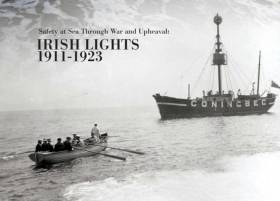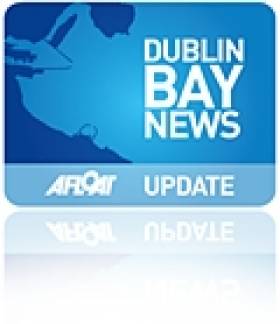Displaying items by tag: dlr Lexicon
‘Safety at Sea Through War and Upheaval’ is the title of an exhibition now running at the dlr Lexicon in Dun Laoghaire, highlighting the history of Ireland’s lighthouses between the years 1911 and 1923.
Using resources from the Irish Lights archive, the exhibition – which runs till 7 January — next year explores the mission of safe navigation at sea in the context of the wider political and economic changes in Ireland at the time: independence, civil war, electrification and more.
A deeper focus on the years of the Great War is afforded by a new exhibition on the SS Hare and SS Adela in Dublin Port, which comes to dlr Lexicon this Monday (8 October) and tells the story of both ill-fated vessels during the rise of the U-boat threat from 1914 to 1918.
Keeping with the maritime theme, the late Des Branigan is the subject of a new display (opened yesterday, Friday 5 October) of archive material from photographs to books that give a rounded picture of a humble, ordinary seaman who achieved extraordinary things.
All exhibitions are open free to the public during library opening hours.
Dun Laoghaire 'Gateway to Ireland' Exhibition Runs In Lead-Up to Bicentenary of the Pier
#Gateway2Ireland – In an exhibition that covers two hundred years since Dún Laoghaire proudly became the ‘Gateway to Ireland’, the flagship dlrLexicon Library that aptly overlooks the harbour explores the theme of travel and travellers to Ireland.
Utilising material from the Local Studies collection, the exhibition highlights how Ireland was presented during that time. A stranger’s fresh eye on Ireland shows much that was unseen and much that has changed.
Looking at these accounts, which attempted to present Ireland to a foreign audience, we can see afresh, through its beauties and the popular observation of its conditions, the Ireland of the past. Ireland’s famous ‘welcome to the stranger’ became, in time, a way for us to review and present ourselves to the world.
The exhibition Gateway to Ireland which began earlier this year concludes on 30 April, so now is the time to visit and get closer to this major aspect of the harbour’s history. Just over a month later, President Micheal D. Higgins will be attending the historic event to celebrate the harbour’s Bi-Centenary on 31 May.
On a related note, another exhibition: Bicentenary of the Pier (15-May-30 June) also takes place in the Lexicon. This exhibition will provide a fascinating account of the pier's past 200 years. The pier later became the East Pier, following the completion of the West Pier to form the completed harbour, though the original plans for a 'place of refuge’ proposed constructing just a single pier.
Colin and Anna Scudds of the Dun Laoghaire Borough Historical Society have carried out the research that includes numerous images of the East Pier from the 19th century to more recent times.
For further details of these exhibtions and events click here
LexIcon Library: Soundings - Collective Memories of the Sea
#LexIconExhibition – Soundings: Collective Memories of the Sea is the inaugural exhibition programme currently held in the new Dun Laoghaire-Rathdown County Council Library headquarters – the dlr LexIcon.
Soundings which is exhibited in the Lexicon's Municipal Gallery, explores the relationships between Dún Laoghaire maritime environment of the sea and its people through artworks, talks and lectures.
Curated by Michael McLoughlin with thanks to Dún Laoghaire RNLI lifeboat crewmembers, Soundings brings together six artists with connections to Dún Laoghaire – the artists have investigated maritime histories, memories, testimonies and archives.
A range of free talks, workshops and performances take place as part of the exhibition.
Among the events is Sounds that Make the Harbour Visible: Wednesday 21 January: 1-2pm (Tea and Coffee provided)
A special screening of A Tribute to Sound, a short film by Simone Corr which commemorates the decommissioning of the foghorn from our coastline,will be followed by a talk. The bells, the foghorn and the maroons captured the imagination of the people of Dún Laoghaire and told a story of what was happening in the harbour.
Join Michael McLoughlin, Curator: Stephen Wynne,Dún Laoghaire RNLI; and Simon Coate, Dún Laoghaire Harbour Master as they discuss sounds of the harbour from the past and what happened as we moved into a more digital era.
RNLI Dun Laoghaire Exhibition
To explore and celebrate Dún Laoghaire's RNLI station, the crewmembers have created a video piece and a series of photographs, these can be viewed in the project room of dlr LexIcon.
For further information about the work of Dún Laoghaire RNLI please see their website: www.dunlaoghaire-lifeboat.ie
Booking: All workshops, talks and other events are free. Please book for all of the above unless otherwise stated as places are limited (to consult, please click HERE for Soundings exhibtion programme)
To book email [email protected] or phone (01) 271 9531 email [email protected]
The exhibition runs until Saturday 24 January 2015. For exhibition opening hours please go to: www.dlrcoco.ie/arts






























































